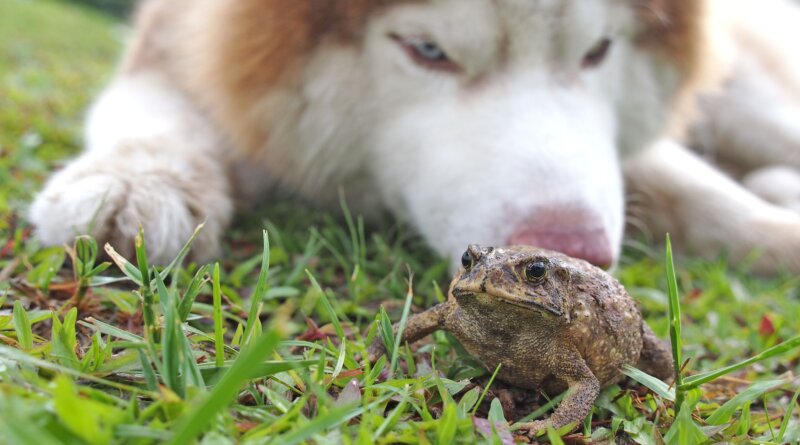My Dog Ate a Frog (or Was It a Toad?)
Chasing a frog or a toad can be exciting if you’re a dog. But what if your dog bites it? Licks it? Or, worse, eats it? Well, you better know a toad from a frog because it makes a big difference in your dog’s health.
“The difference between ingesting a frog and a toad can be quite massive, as toads can be very poisonous for dogs,” says Dr. Anna Robinson, a small animal veterinarian in New Braunfels, Texas.
“Frogs in North America mostly cause mild to moderate gastrointestinal issues with your dog. You’ll typically see some vomiting and diarrhea that’ll correct itself over the span of a few days many times without veterinary intervention required. For frogs, you just pretty much wait it out and just comfort your dog while he goes through the symptoms,” she says. “Just make sure he doesn’t become dehydrated. If so, then you need to call your veterinarian.”
If you can’t reach your veterinarian or an emergency animal clinic, call the ASPCA Animal Poison Control Center at 888-426-4435 or the Pet Poison Helpline at 855-764-7661. There will be a charge for their services, but it’s well worth the cost. If you call, be sure to also get your case number to follow-up with your veterinarian.
Toads Secrete Poison
Certain species of toads can secrete a toxin that can poison animals who attempt to ingest them. Whether a dog licks or completely ingests a toad, he can suffer from excessive drooling, vomiting and/or irritation in the mouth or worse.
More severe poisonings can happen with the cane toad and the Colorado River/Sonoran Desert toads. The cane toad is typically found in Florida, Hawaii, Louisiana, Texas, and other tropical areas. The Colorado River/Sonoran Desert toad can be found in Arizona, California, New Mexico, and Texas. Both toads can cause life-threatening poisoning.
Signs of Poisoning
Symptoms you may see:
- Pawing at the mouth or vocalizing
- Gums may become very red and irritated
- Vomiting and diarrhea
- Stumbling (progressive)
- Tremors/seizures (progressive)
- Abnormal eye movement (progressive)
- Difficulty breathing (progressive)
- Decreased heart rate and abnormal heart rhythms (progressive)
Whether it was a frog or a toad, immediately flush the mouth with large amounts of running water using a hose or garden sink sprayer. Doing so will decrease the amount of poison absorbed, which decreases the severity of the clinical signs. However, make sure you point the water out of the dog’s mouth, as you do not want him to swallow or inhale the water. And then get to the veterinarian’s office ASAP.
At the Vet’s Office
The veterinarian will prescribe treatment depending on the signs that develop as well as the type of toad and amount of ingestion. Treatment might include:
- Intravenous fluids
- Anti-nausea medication
- Muscle relaxants
- Medications to control the heart rate or seizures
- Possible surgery to remove ingested toads
“It can be difficult for an owner to be able to distinguish between a frog and a toad, but it’s important to know your amphibians,” says Dr. Robinson. “It could save your dog’s life.”




